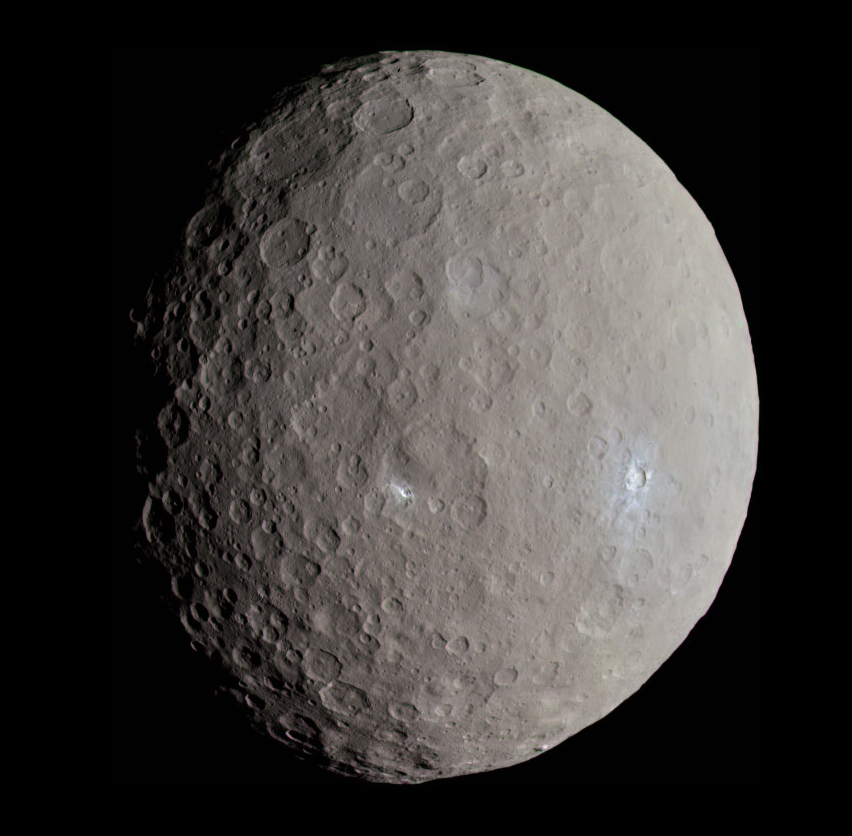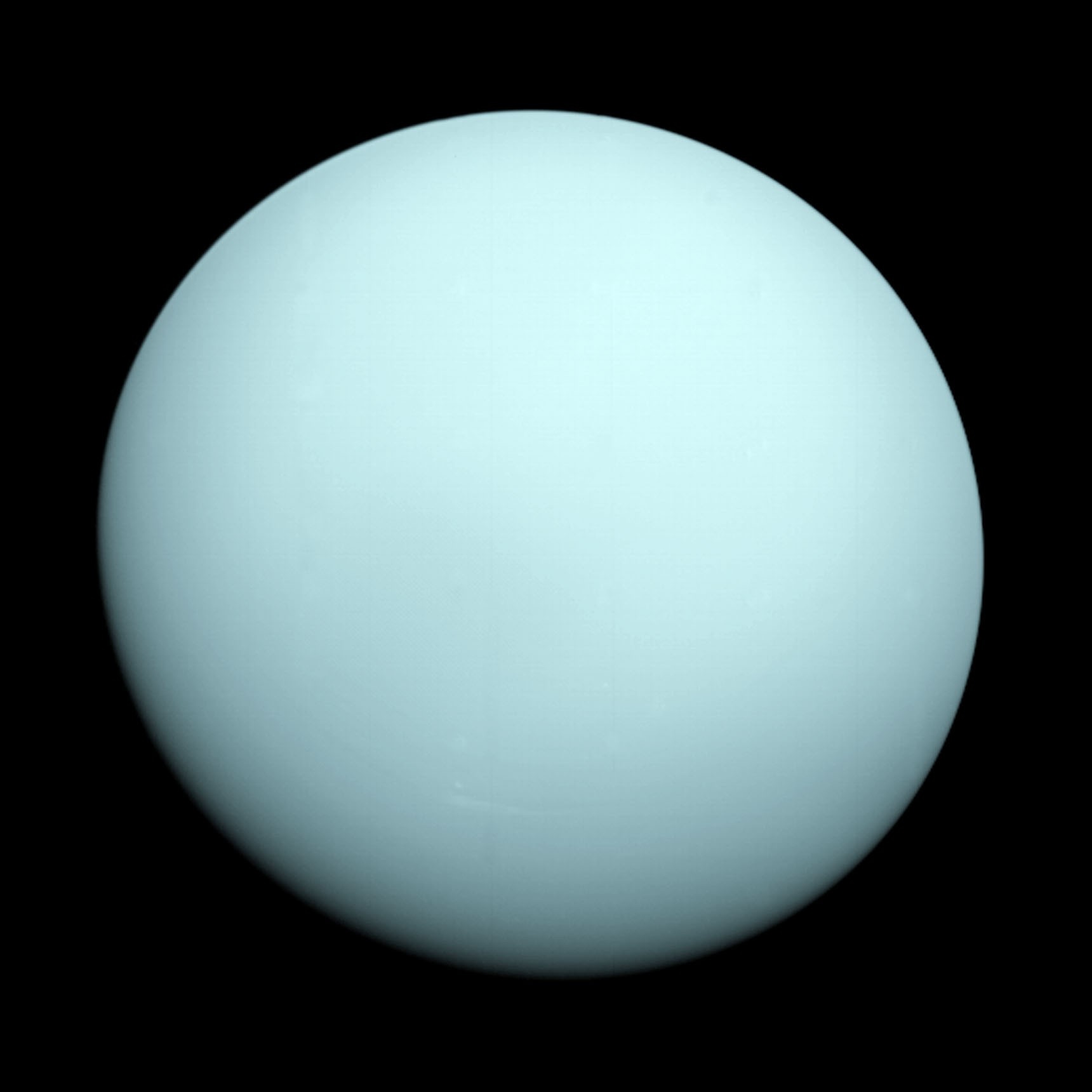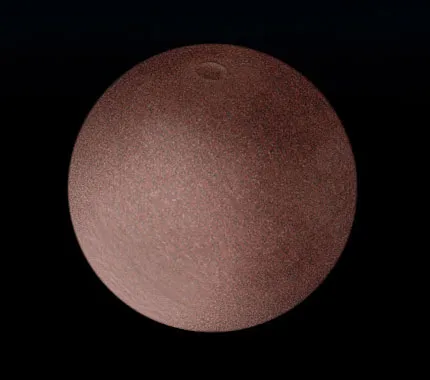SOLAR SYSTEM
The Solar System is the gravitationally bound system of the Sun and the objects that orbit it, either directly or indirectly.Of the objects that orbit the Sun directly, the largest are the eight planets,with the remainder being smaller objects, the dwarf planets and small Solar System bodies.
The Solar System formed 4.6 billion years ago from the gravitational collapse of a giant interstellar molecular cloud. The vast majority of the system's mass is in the Sun,
with the majority of the remaining mass contained in Jupiter. The four smaller inner planets, Mercury, Venus, Earth and Mars, are terrestrial planets, being primarily
composed of rock and metal. The four outer planets are giant planets, being substantially more massive than the terrestrials. The two largest planets, Jupiter and Saturn,
are gas giants,being composed mainly of hydrogen and helium; the two outermost planets, Uranus and Neptune, are ice giants, being composed mostly of substances with relativel
high melting points compared with hydrogen and helium, called volatiles, such as water, ammonia and methane. All eight planets have almost circular orbits that lie within a
nearly flat disc called the ecliptic.
The Solar System also contains smaller objects.The asteroid belt, which lies between the orbits of Mars and Jupiter, mostly contains
objects composed, like the terrestrial planets, of rock and metal. Beyond Neptune's orbit lie the Kuiper belt and scattered disc, which are populations of trans-Neptunian objects
composed mostly of ices, and beyond them a newly discovered population of sednoids. Within these populations, some objects are large enough to have rounded under their own gravity,
though there is considerable debate as to how many there will prove to be.Such objects are categorized as dwarf planets. The only certain dwarf planet is Pluto, with another
trans-Neptunian object,Eris, expected to be, and the asteroid Ceres at least close to being a dwarf planet.In addition to these two regions, various other small-body populations,
including comets,centaurs and interplanetary dust clouds, freely travel between regions. Six of the planets, the six largest possible dwarf planets, and many of the smaller
bodies are orbited
by natural satellites, usually termed "moons" after the Moon. Each of the outer planets is encircled by planetary rings of dust and other small objects.
THE SUN
The Sun is the star at the center of the Solar System. It is a nearly perfect sphere of hot plasma,heated to incandescence by nuclear fusion reactions in its core, radiating the energy mainly as light and infrared radiation. It is by far the most important source of energy for life on Earth. Its diameter is about 1.39 million kilometres (864,000 miles), or 109 times that of Earth, and its mass is about 330,000 times that of Earth. It accounts for about 99.86% of the total mass of the Solar System.Roughly three quarters of the Sun's mass consists of hydrogen (~73%); the rest is mostly helium (~25%), with much smaller quantities of heavier elements, including oxygen, carbon, neon, and iron.
THE PLANETS
A planet is an astronomical body orbiting a star or stellar remnant that is massive enough to be rounded by its own gravity, is not massive enough to cause
thermonuclear fusion, and has cleared its neighbouring region of planetesimals.
The term planet is ancient, with ties to history, astrology, science, mythology, and religion.
Apart from Earth itself, five planets in the Solar System are often visible to the naked eye. These were regarded by many early cultures as divine, or as emissaries of deities.
As scientific knowledge advanced, human perception of the planets changed, incorporating a number of disparate objects.
- Mercury
- Venus
- Earth
- Mars
- Jupiter
- Saturn
- Uranus
- Neptune
INNER SOLAR SYSTEM
The first four planets closest to the Sun are called the inner planets. They are small and dense terrestrial planets, with solid surfaces. They are made up of mostly rock and metal with a distinct internal structure and a similar size. Three also have an atmosphere. The study of the four planets gives information about geology outside the Earth. Most asteroids are also often counted with the inner planets. Terrestrial planets region contains the four planets closest to the sun, all are rocky planets- Mercury
- Venus
- Earth
- Mars
Asteroid belt region contains;- Ceres(the only dwarf planet in this region)
- Asteroids
MERCURY
Mercury is the smallest and innermost planet in the Solar System. Its orbit around the Sun takes 87.97 days, the shortest of all the planets in the Solar System.
It is named after the Greek god Hermes (Ερμής), translated into Latin Mercurius Mercury, god of commerce, messenger of the gods, mediator between gods and mortals.
Mercury rotates in a way that is unique in the Solar System. It is tidally locked with the Sun in a 3:2 spin–orbit resonance,meaning that relative to the fixed stars,
it rotates on its axis exactly three times for every two revolutions it makes around the Sun.As seen from the Sun, in a frame of reference that rotates with the orbital
motion, it appears to rotate only once every two Mercurian years. An observer on Mercury would therefore see only one day every two Mercurian years.

VENUS
Venus is the second planet from the Sun. It is named after the Roman goddess of love and beauty. As the second-brightest natural object in the night sky after the Moon, Venus can cast shadows and can be, on rare occasion, visible to the naked eye in broad daylight.Venus lies within Earth's orbit, and so never appears to venture far from the Sun, either setting in the west just after dusk or rising in the east a bit before dawn. Venus orbits the Sun every 224.7 Earth days.With a rotation period of 243 Earth days, it takes longer to rotate about its axis than any other planet in the Solar System and does so in the opposite direction to all but Uranus (meaning the Sun rises in the west and sets in the east).Venus does not have any moons, a distinction it shares only with Mercury among planets in the Solar System.

EARTH
Earth is the third planet from the Sun and the only astronomical object known to harbor life. According to radiometric dating estimation and other evidence
Earth formed over 4.5 billion years ago. Earth's gravity interacts with other objects in space, especially the Sun and the Moon, which is Earth's only natural satellite.
Earth orbits around the Sun in about 365.25 days.
Earth's axis of rotation is tilted with respect to its orbital plane, producing seasons on Earth. The gravitational
interaction between Earth and the Moon causes tides, stabilizes Earth's orientation on its axis, and gradually slows its rotation. Earth is the densest planet in the Solar
System and the largest and most massive of the four rocky planets.

MARS
Mars is the fourth planet from the Sun and the second-smallest planet in the Solar System, being larger than only Mercury. In English, Mars carries the name of the Roman god of war and is often referred to as the "Red Planet".The latter refers to the effect of the iron oxide prevalent on Mars's surface, which gives it a reddish appearance distinctive among the astronomical bodies visible to the naked eye. Mars is a terrestrial planet with a thin atmosphere, with surface features reminiscent of the impact craters of the Moon and the valleys, deserts and polar ice caps of Earth.The days and seasons are comparable to those of Earth, because the rotational period as well as the tilt of the rotational axis relative to the ecliptic plane are similar. Mars is the site of Olympus Mons, the largest volcano and highest known mountain on any planet in the Solar System.

CERES(DWARF PLANET)
Ceres is the largest object in the main asteroid belt that lies between the orbits of Mars and Jupiter. With a diameter of 940 km (580 mi), Ceres is both the largest of the asteroids and the only dwarf planet inside Neptune's orbit.It is the 25th-largest body in the Solar System within the orbit of Neptune.Ceres was the first asteroid to be discovered (by Giuseppe Piazzi at Palermo Astronomical Observatory on 1 January 1801).It was originally considered a planet, but was reclassified as an asteroid in the 1850s after many other objects in similar orbits were discovered.

ASTEROIDS
Asteroids are minor planets, especially of the inner Solar System. Larger asteroids have also been called planetoids. These terms have historically been applied to any astronomical object orbiting the Sun that did not resolve into a disc in a telescope and was not observed to have characteristics of an active comet such as a tail. As minor planets in the outer Solar System were discovered that were found to have volatile-rich surfaces similar to comets, these came to be distinguished from the objects found in the main.

OUTER SOLAR SYSTEM
Gas giant planets region contains;- Jupiter
- Saturn
- Uranus
- Neptune
JUPITER
Jupiter is the fifth planet from the Sun and the largest in the Solar System. It is a gas giant with a mass one-thousandth that of the Sun, but two-and-a-half times that of all the other planets in the Solar System combined. Jupiter is one of the brightest objects visible to the naked eye in the night sky, and has been known to ancient civilizations since before recorded history. It is named after the Roman god Jupiter.When viewed from Earth, Jupiter can be bright enough for its reflected light to cast visible shadows, and is on average the third-brightest natural object in the night sky after the Moon and Venus.Jupiter is primarily composed of hydrogen with a quarter of its mass being helium, though helium comprises only about a tenth of the number of molecules. It may also have a rocky core of heavier elements,but like the other giant planets,Jupiter lacks a well -defined solid surface. Because of its rapid rotation, the planet's shape is that of an oblate spheroid (it has a slight but noticeable bulge around the equator).

SATURN
Saturn is the sixth planet from the Sun and the second-largest in the Solar System, after Jupiter. It is a gas giant with an average radius of about nine times that of Earth. It only has one-eighth the average density of Earth; however, with its larger volume, Saturn is over 95 times more massive.Saturn is named after the Roman god of wealth and agriculture; its astronomical symbol (♄) represents the god's sickle.Saturn's interior is most likely composed of a core of iron–nickel and rock (silicon and oxygen compounds). Its core is surrounded by a deep layer of metallic hydrogen,an intermediate layer of liquid hydrogen and liquid helium, and finally a gaseous outer layer.Saturn has a pale yellow hue due to ammonia crystals in its upper atmosphere.

URANUS
Uranus is the seventh planet from the Sun. Its name is a reference to the Greek god of the sky, Uranus, who, according to Greek mythology, was the grandfather of Zeus (Jupiter) and father of Cronus (Saturn). It has the third-largest planetary radius and fourth-largest planetary mass in the Solar System. Uranus is similar in composition to Neptune, and both have bulk chemical compositions which differ from that of the larger gas giants Jupiter and Saturn. For this reason, scientists often classify Uranus and Neptune as "ice giants" to distinguish them from the other gas giants. Uranus' atmosphere is similar to Jupiter's and Saturn's in its primary composition of hydrogen and helium, but it contains more "ices" such as water, ammonia, and methane, along with traces of other hydrocarbons.[16] It has the coldest planetary atmosphere in the Solar System, with a minimum temperature of 49 K (−224 °C; −371 °F), and has a complex, layered cloud structure with water thought to make up the lowest clouds and methane the uppermost layer of clouds.The interior of Uranus is mainly composed of ices and rock.
NEPTUNE
Neptune is the eighth and farthest-known Solar planet from the Sun. In the Solar System, it is the fourth-largest planet by diameter, the third-most-massive planet, and the densest giant planet. It is 17 times the mass of Earth, slightly more massive than its near-twin Uranus. Neptune is denser and physically smaller than Uranus because its greater mass causes more gravitational compression of its atmosphere. The planet orbits the Sun once every 164.8 years at an average distance of 30.1 AU (4.5 billion km; 2.8 billion mi).It is named after the Roman god of the sea and has the astronomical symbol ♆, a stylised version of the god Neptune's trident.
TRANS NEPTUNE BELT
Trans-Neptune region or The Kuiper belt region contains;- Pluto
- Haumea
- Makemake
PLUTO
Pluto is a dwarf planet in the Kuiper belt, a ring of bodies beyond the orbit of Neptune. It was the first and the largest Kuiper belt object to be discovered.
Pluto was discovered by Clyde Tombaugh in 1930 and declared to be the ninth planet from the Sun. After 1992, its status as a planet was questioned following the discovery of several objects of similar size in the Kuiper belt. In 2005, Eris, a dwarf planet in the scattered disc which is 27% more massive than Pluto, was discovered. This led the International Astronomical Union (IAU) to define the term "planet" formally in 2006, during their 26th General Assembly. That definition excluded Pluto and reclassified it as a dwarf planet.
HAUMEA
Haumea is a likely dwarf planet located beyond Neptune's orbit.It was discovered in 2004 by a team headed by Mike Brown of Caltech at the palomar Observatory in the USA and and independently in 2005 by a team headed by José Luis Ortiz Moreno at the Sierra Nevada Observatory in Spain, though the latter claim has been contested.On September 17, 2008, it was named after Haumea, the Hawaiian goddess of childbirth, under the expectation by the International Astronomical Union (IAU) that it would prove to be a dwarf planet. It is probably the third-largest known trans-Neptunian object, after Eris and Pluto.
MAKEMAKE
Makemake is a likely dwarf planet and perhaps the second largest Kuiper belt object in the classical population,with a diameter approximately two-thirds that of Pluto. Makemake has one known satellite, S/2015 (136472).Makemake's extremely low average temperature, about 40 K (−230 °C), means its surface is covered with methane, ethane, and possibly nitrogen ices.
Makemake was discovered on March 31, 2005, by a team led by Michael E. Brown, and announced on July 29, 2005. Initially, it was known as 2005 FY9 and later given the minor-planet number 136472. In July 2008 it was named after Makemake, the creator god of the Rapa Nui people of Easter Island, under the expectation by the International Astronomical Union (IAU) that it would prove to be a dwarf planet.

Post a Comment